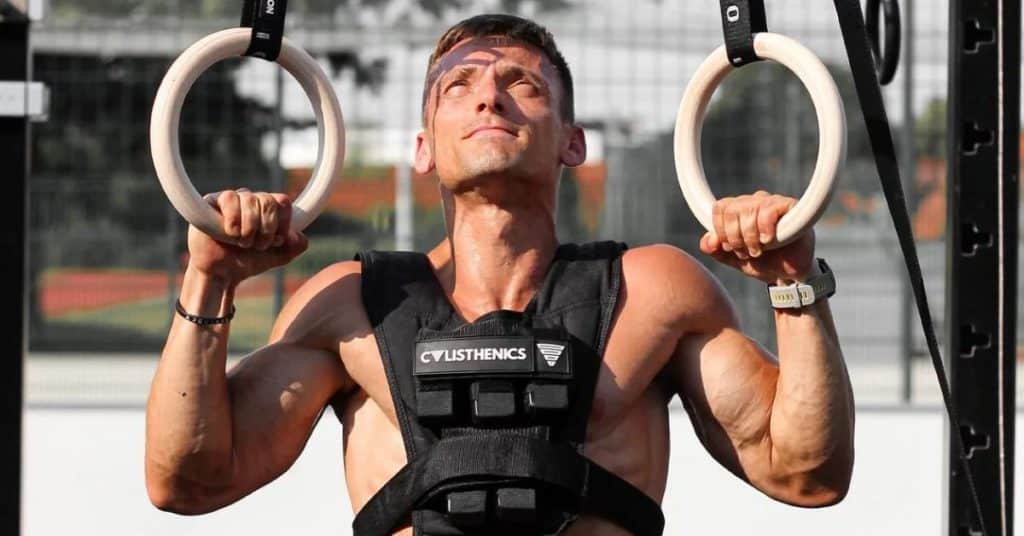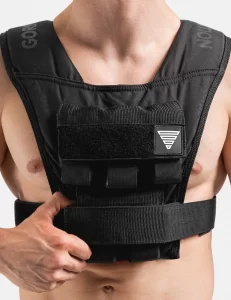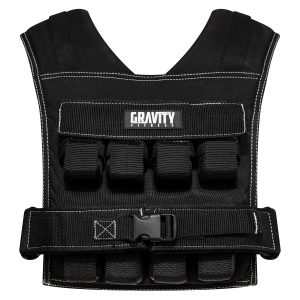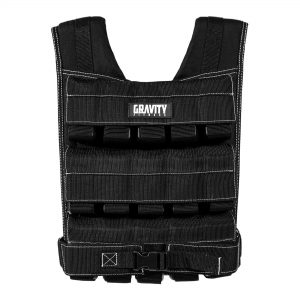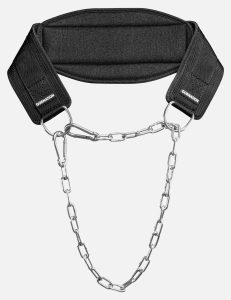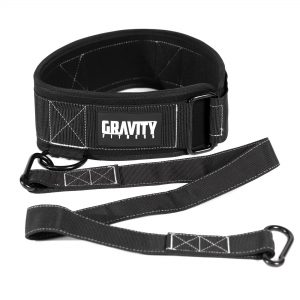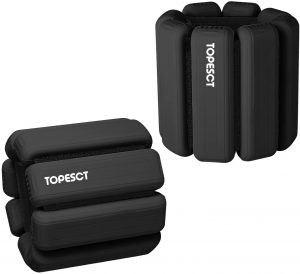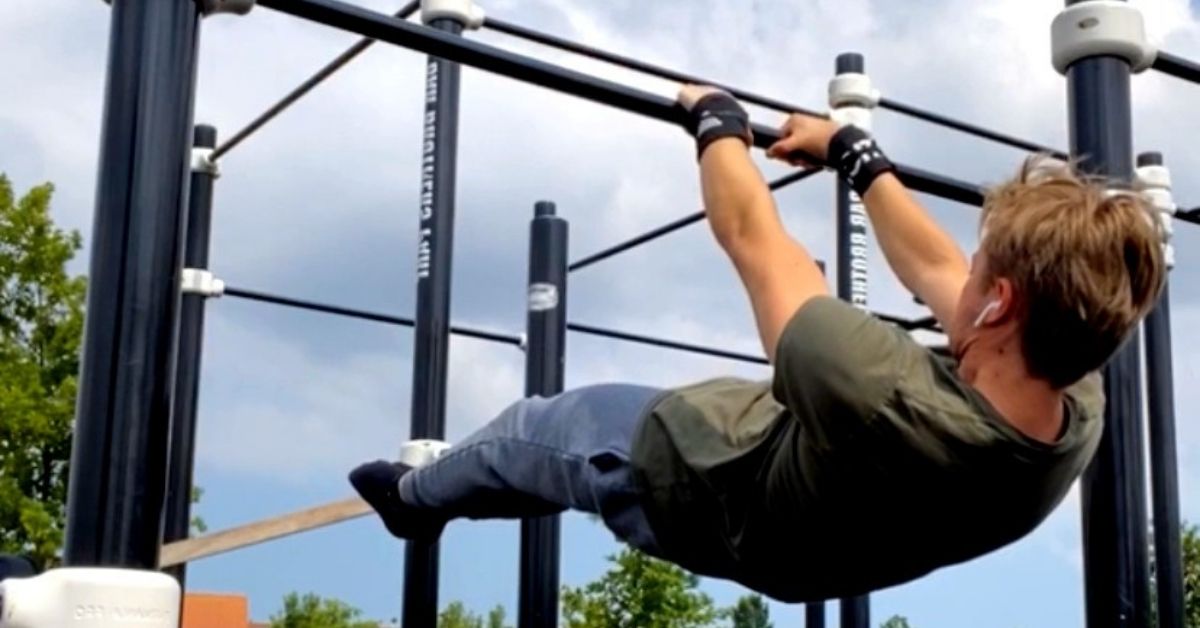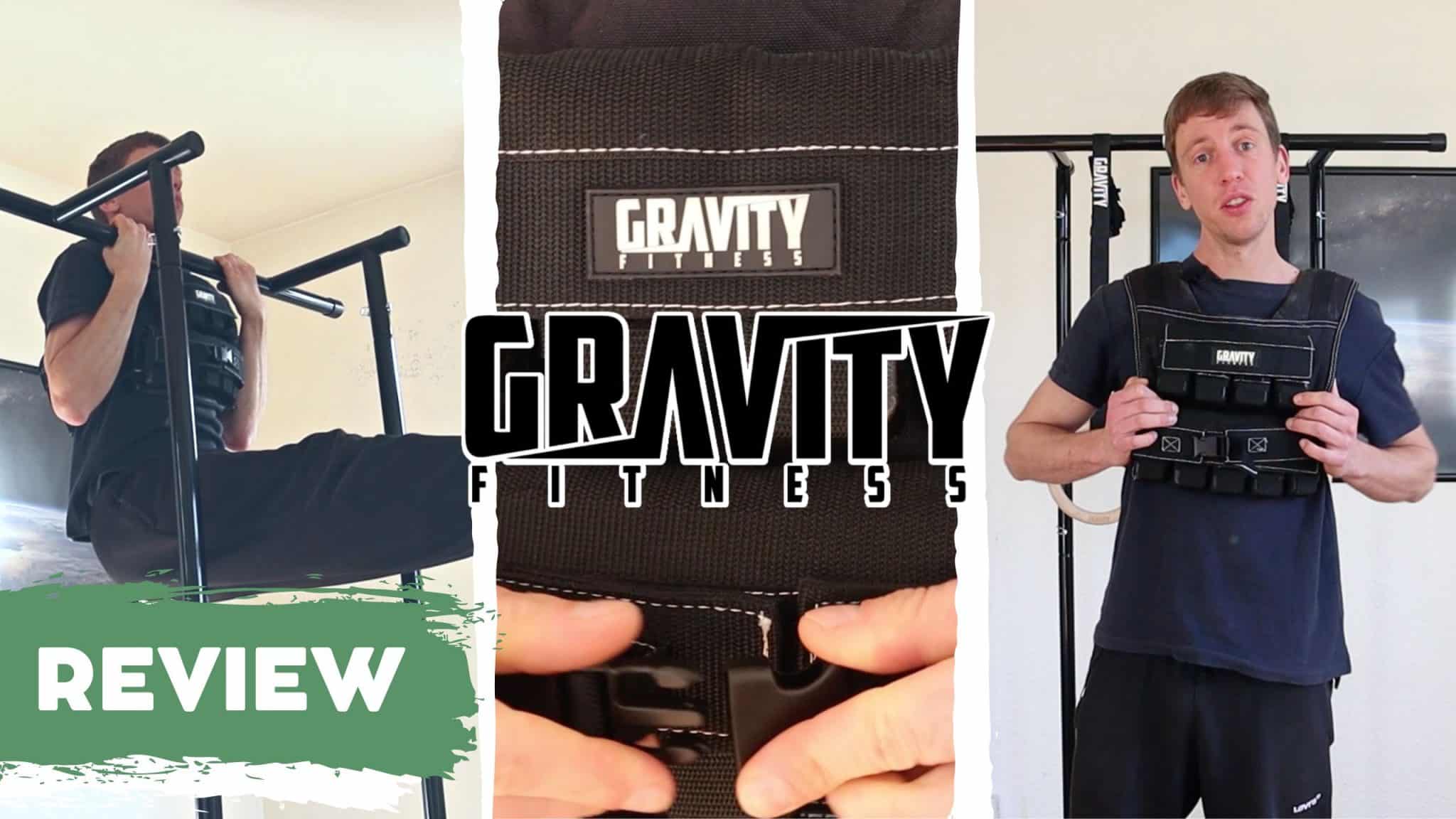Weighted Pull-Ups are an effective training exercise to take your Calisthenics and your upper arms to the next level. Being some of the more common exercises in Weighted Calisthenics, Weighted Pull-Ups and Weighted Chin-Ups can dramatically increase your arm and upper-body strength. Yet the progression from ordinary Pull-Ups to Weighted Pull-Ups can be arduous and the risk of injury is significant. When done properly though and with the right Calisthenics equipment, Weighted Pull-Ups and by extension Weighted Chin-Ups are some of the most effective Calisthenics exercises you can do. We’ll explain how you can incorporate and get the most out of your weighted exercise with a number of appropriate routines.
What are Weighted Pull-Ups?
Put in the simplest terms, Weighted Pull-Ups are like regular Pull-Ups but while artificially weighing your body down. The added weight makes the exercise harder and produces more muscle hypertrophy. Most commonly this is done by wearing a Weighted Vest or a Dip Belt. These are comfortable to wear accessories which weigh down your body but are designed not to inhibit your movements or cause undue discomfort. There are also alternatives to these over-the-counter wearables which we will discuss later in this article.
Weighted exercise has entered the popular imagination through pop-culture franchises like Dragon Ball Z, where characters are seen training and becoming stronger through the constant wear and exercising with weighted clothing. Weighted Calisthenics can make you stronger, however what these fictional accounts often get wrong is the application. For one, continues wear can cause muscle atrophy and worse; joint atrophy. Refer to our suggested routines for a safe and constructive way to add Weighted Pull-Ups and Weighted Chin-Ups to your exercise routine.
What are the Benefits of Weighted Pull-ups?
Weighted Pull-Ups have a lot of benefits in comparison to regular Pull-Ups. However, they are much harder to do and it is easy to underestimate the added difficulty a small amount of extra weight can bring. That said, doing Weighted Pull-Ups has a number of very desirable benefits to the Calisthenics practitioner;
Get Bigger and Faster Gains
The primary benefit of Weighted Pull-Ups, and Weighted Calisthenics in general, is more muscle growth both in terms of strength and size for your back, shoulders and biceps. Your whole upper body and upper arms stand to become bigger and stronger, faster with Weighted Pull-Ups. By increasing the weight, you create more overload and can be seen in the same way as adding a plate to your regular bench press. The exercise is harder and a correct form therefore more difficult.
The enhanced muscle hypertrophy leads to bigger muscle gains if you are consistent. You will feel and see this progress first and foremost in your latissimus dorsi, middle and lower traps, posterior deltoid, rhomboideus major and minor, teres major and minor and biceps. You will get more width but also build up more depth in your size.
Increased Testosterone Production
Doing Weighted Pull-Ups, due to their higher resistance, will provoke your body into creating more testosterone to step up to the challenge. This is especially the case when done consistently. More testosterone will lead to faster and bigger gains, not only during Weighted Pull-Ups but for the rest of your Calisthenics too.
Increasing Maximum Reps
The secondary benefit is that you increase your rep number for regular pull-ups. Since Weighted Pull-Ups are harder to perform, you will get used to this resistance. If you then train without the extra weight, you notice that your pull-ups are suddenly much easier. This is perfect for mastering the regular pull-up and its form. When you’re no longer struggling to hit that number of reps, you can do them more slowly. Slower means improved form. Slow is smooth and smooth is fast.
Builds More Bicep and Shoulder at Once
Weighted Pull-Ups and particularly Weighted Chin-Ups will help you build your upper arms. Since these are compound exercises, your biceps will also gain strength and size. The whole arm undergoes a very uniform progression, resulting in natural and even looking growth, which is most often the most esthetically pleasing result. Contrast this to isolated exercises which can result in mismatched biceps to shoulder size or similarly awkward-looking musculature.
Building Quicker and More Proportional
Isolated exercises can be a great addition to your training but you build overall strength with compound exercises. Compound exercises will also give you less training time and a more satisfied feeling since more muscles are used in one single training. The pull-up is a compound exercise. With added weight you make it very difficult for yourself and let your muscles work as a team to perform the reps. You build your entire back and biceps in balance. Building your back this way will have great results for your body posture.
Better Grip
Since you are heavier with weighted pull-ups, your hands have to work harder. The muscles of your hands and forearms need to hold on tighter. In time, that leads to better grip strength and endurance. Make sure to do enough stretching of these muscles and activate those wrists properly with Mobility Exercise before, after and in-between training to reduce the risk of (potentially permanent) injury. The stronger grip you develop also makes Weighted Pull-Ups great as preparation for climbing, for instance wall-climbing, cliff-climbing and mountaineering.
Less Hip Flexion
Some people will (automatically) kick up their legs with a pull-up and it’s not easy to resist that. If you’re wearing a Dip Belt or are holding a dumbbell between your legs, you are automatically dissuaded from doing so and helps you correct your form.
Preparing for More Advanced Techniques
In addition to more reps for your regular Pull-Up, more advanced techniques such as a High Pull-Up, the Archer Pull-Up and of course the One Arm Pull-Up will become easier to train since your pull-ups have gotten so much easier. A perfect way to prepare.
How to Do Weighted Pull-ups
If you are interested in Calisthenics, you have probably seen them before: vests which look like military or law enforcement body armor worn in the gym. These Weighted Vests, along with other wearables make Weighted Calisthenics a possibility. The act of doing Weighted Pull-Ups is as simple as wearing one of these Weighted Vests or their popular alternative, a dip belt, while doing your pull-ups. We’ll go over your options and their alternative;
The Correct Pull-Up Bar
Not to stir up controversy, but for Pull-Ups you’ll need some kind of appropriate Pull-Up Bar. The Pull-Up Bar needs to be sturdy and of a high quality to take the weight of both you and the extra weight you’re adding. An oft-overlooked but necessary feature of a Pull-Up Bar for Weighted Pull-Ups and Weighted Chin-Ups is comfort. With more weight hanging by your fingers, the bar will dig deeper into the flesh of your hand. A comfortable top bar which is neither too thin nor too thick is important.
Weighted Vest Pull-Ups
A Weighted Vest is a sort of harness you wear over your shoulders and are similar in appearance to body armor worn by the military and law enforcement. The added weight comes from inserts placed into two or more pouches distributed over the torso area of the Weighted Vest. This allows for the adjustment of the total weight added to the vest. Commonly used inserts are baglets of sand or metal bars (usually lead with a steel shell). Weights are often expressed in kilograms and commonly used standard weights are 1-, 2- and 5-kilogram inserts. Most Weighted Vests ship with inserts that amount to either 5, 10 or 20 kilograms of total added weight.
The benefit of the Weighted Vest is its versatility. You can wear a lighter load to do other exercises, including jogging while the vest will sit comfortably. We prefer the Gornation Vest for weights of 10 kilograms or less and the Gravity Fitness Weighted Vest for weight of 20 to 30 kilograms, for their durability and comfort of wear.
10% off with our code: CWW10
Get it here:
Get it here:
Get it here:
Dip Belt
A Dip Belt is a popular alternative to the Weighted Vest for its ability to sustain a lot more added weight. You wear the Dip Belt around your waist and with a carabiner and steel chain you attach weight plates. The system is virtually indestructible (you could suspend a modest hatchback from the better Dip Belts) so the amount of weight you could add is much larger than with a Weighted Vest. The downside though is that all that weight is hanging between your legs (haha!). This means you can’t jump or even walk very well and severely limits your range of motions to just your upper body (alright, not so funny then).
We do not recommend the Dip Belt for the beginner who has just begun doing Weighted Pull-Ups and Weighted Chin-Ups. This amount of weight could injure the disks of your lower and upper back, which could very well be a permanent injury or one requiring surgery. Only apply a Dip Belt to your Weighted Pull-Ups if you are well-trained, with a strong and developed core.
10% off with our code: CWW10
Get it here:
Get it here:
Weighted Pull-ups Alternatives
There are some alternative methods in case you don’t have a vest or belt.
- Backpack: Use a regular backpack. Use anything you want to add weight. Even books will help. But be aware that all the added weight is distributed behind your back. More than 5 kg is bad for your posture and could lead to injuries.
- Weighted Pull-Ups with Dumbbells: Hold a dumbbell between your thighs or feet to add extra weight. Your form will inevitably suffer as you’re now also applying lateral tension with your legs to hold on to the dumbbells. Weighted Pull-Ups with dumbbells are a stopgap solution at best.
- Weighted gloves
Get it here:
- Wrist Weights or ankle weights
Get it here:
Get it here:
How to Progress with Weighted Pull-Ups?
Slow and steady wins the race. You’ll be surprised how much more difficult even a low rep Push-Up set will become with just a little added weight. You need to build it up very slowly and consistently. For a baseline, you need to be able to do 3 sets of 10 regular Pull-Ups (no weights) with a maximum of 90 seconds rest between sets. Look at your form and make an honest assessment (this is where a professional trainer at a gym could come in) about your form. If your form is correct and you meet this baseline, you are ready to start with your weighted exercise.
Start with a total weight of 2,5 to 5 kilograms maximum (we’re assuming you’re using a Weighted Vest). Make sure you distribute this weight evenly on the front and back of your vest. Begin with 5 sets of 5 reps with a 3-minute rest between sets. Keep practicing this until you do 5 sets of 5 reps with ease.
This 5 x 5 method is perfect for building strength quickly and lets you get used to the extra weight. Rest long enough for your muscles to recover as much as possible. Now keep the same weight, but do 3 of your maximum number reps. If you do 3 sets of 15 reps or more it’s time to add more weight. If you added 2,5 kg and it’s too easy to do 3 sets of 15 reps then start with 5 kg.
Progressing More
Always add weight in increments of 2,5 kg or less to get used to the new weight. Your shoulder and elbow joint and ligaments can’t handle to much weight-increase at once, especially if your muscles aren’t strong enough yet.
After adding to the weight, do 3 sets with a maximum number of reps to see how far you come. Then do the 5 x 5 method until you can repeat 3 sets of 15 reps. You can then add weight again in a rinse and repeat process, every time adding weight but lowering the reps back to 5 x 5 and working your way back to 3 x 15.
You should do Weighted Pull-Ups only 1 to 3 times a week to allow your body time to recover. In the beginning, you can intersperse Weighted Pull-Ups with regular Pull-Ups on other days to help you improve form.
Weighted Pull-ups Workouts
You can create many routines with a variety of Pull-Up variations to which you can add artificial weight. Australian Pull-Ups, Weighted Chin-Ups, Archer Pull-Ups (advanced), Muscle-Ups (very advanced) and alternated grips can all improve the quality and effectiveness of your Weighted Pull-Ups. Looking at Weighted Calisthenics in general, you could combine Weighted Pull-Ups with Weighted Push-Ups and dips for a full-body routine.
We have prepared 5 routines for you containing only Weighted Pull-Ups with variations. Do these routines with the maximum amount of weight you can handle while still holding good form. These routines also work without the added weight, so if you’re not on that level yet you can still do them. This will prepare you for the step up to Weighted Pull-Up[JD8] s.
| Weighted Pull-Ups Workout 1 | |
| 30 seconds per exercise, 30 seconds rest for 3 to 5 rounds | |
| Round 1 | Narrow Grip Pull-Ups |
| Round 2 | Normal Grip Pull-Ups |
| Round 3 | Wide Grip Pull-Ups |
| Round 4 | Wide Grip Chin-Ups |
| Round 5 | Narrow Grip Chin-Ups |
| Weighted Pull-Ups Workout 2 | |
| 3 sets with 60 seconds rest between sets | |
| Exercise 1 | Archer Pull-Ups (maximum reps) |
| Exercise 2 | Wide Grip Pull-Ups (8 reps) |
| Exercise 3 | Narrow Grip Pull-Ups (12 reps) |
| Exercise 4 | Chin-Ups (maximum reps) |
| Exercise 5 | Australian Wide Grip Pull-Ups (20 reps) |
| Weighted Pull-Ups Workout 3 | |
| Pyramid Test: Add 1 rep per set until failure | |
| Exercise 1 | Normal Grip Weighted Pull-Up: 1 rep |
| Rest | 15 seconds |
| Exercise 2 | Normal Grip Weighted Pull-Ups: 2 reps |
| Rest | 15 seconds |
| Exercise 3 | Normal Grip Weighted Pull-Ups: 3 reps, and so on until failure |
| If you fail twice, take a 5-minute rest and try one more time starting at 1 rep |
| Weighted Pull-Ups Workout 4 | |
| 3 sets with 60 seconds rest between sets | |
| Exercise 1 | Normal Grip Pull-Ups (5 to 10 reps) |
| Exercise 2 | Australian Pull-Ups w. hands supinated (5 to 10 reps) |
| Exercise 3 | Chin-Ups (5 to 10 reps) |
| Exercise 4 | Australian Wide Grip Pull-Ups (5 to 10 reps) |
| Exercise 5 | Australian Narrow Grip Pull-Ups (5 to 10 reps) |
| Weighted Pull-Ups Workout 5 | |
| Speed: Maximum Reps in 20 seconds, 60 second rest | |
| Exercise 1 | Weighted Muscle-Ups |
| Exercise 2 | Normal Grip Weighted Pull-Ups |
| Exercise 3 | Weighted Chin-Ups |
| Exercise 4 | Australian Pull-Ups |
| If completed without failure: take 5 minutes rest, repeat cycle until failure |
Conclusion about Weighted Pull-Ups
Weighted Calisthenics can be a great next step in your physical fitness and to enhance your strength. Bodyweight exercise is by its nature depended on the maximum weight of your body. At some point, and this is different for everyone, your muscles will be so strong that any addition of reps won’t see any gains. You’ll tire, sure, but that’s just the glucose being burnt away. You’re not getting any stronger anymore from the weight of your body alone.
Time to add weights artificially. Weighted Pull-Ups are one of the most popular Calisthenics exercises to do so. You can expect to see good results, perhaps even as fast as when you were just beginning. Normal Pull-Ups will become much easier but this makes it important that you pay more attention to perfect form.
The best way to perform weighted exercise is by wearing either a Weighted Vest, or a Dip Belt. These are comfortable to wear and easily adjustable. Once you have the means and the spirit to tackle this new challenge, following a careful yet rigorous workout routine where you add weighted exercise once to twice a week to your routine is the best course of action.
Frequently Asked Questions About Weighted Pull-Ups
Here are a few frequently asked questions thrown at us by you.
Weighted Pull-Ups, even with the addition of only a small amount of extra weight, are generally very hard. When you're just beginning, we recommend adding no more than 5 kilograms of weight. Later on, progressing with Weighted Pull-Ups is much the same as progressing any other exercise.
Yes, Weighted Pull-Ups can drastically increase the number of reps you can perform while doing regular Pull-Ups. It is important that you focus on perfect form with your normal Pull-Ups, after having gained strength through weighted exercise.
Weighted Pull-Ups, like normal Pull-Ups exercise your latissimus dorsi, middle and lower traps, posterior deltoid, rhomboideus major and minor, teres major and minor and biceps. You will get more width but also build up more depth in your size.
Weighted Pull-Ups are a great way to increase your upper-body strength. When you've hit a plateau doing regular Pull-Ups, adding weight to your body is the next step to see more gains and faster progress. Before that, there is little gain to using artificial weight and it may work against you.
The biceps are one of the areas which benefit from doing Weighted Pull-Ups. Once you've incorporated them into your routine, you can increase the size, depth and girth of your biceps effectively by doing Weighted Pull-Ups and Weighted Chin-Ups.


